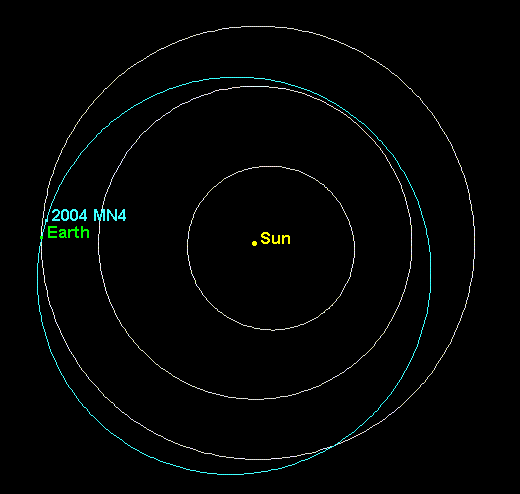Newfound asteroid the size of a house will fly safely by Earth on Wednesday
by 

Scientists first spotted it on April 11.
A newly discovered asteroid about the size of a house will zip safely by Earth on Wednesday (April 15), passing just inside the orbit of the moon.
The asteroid 2020 GH2 will pass Earth at a range of about 223,000 miles (359,000 kilometers). The average distance from the Earth to the moon is about 239,000 miles (385,000 km).
According to NASA's Asteroid Watch program, asteroid 2020 GH2 is about between 43 and 70 feet (13-70 meters) wide, or about the size of a detached house. It was first discovered on Saturday (April 11) and is being tracked by astronomers at several observatories, including the Catalina Sky Survey at Mount Lemmon in Arizona, according to the Minor Planet Center at the Smithsonian Astrophysical Observatory in Cambridge, Massachusetts
Asteroid 2020 GH2 poses no impact risk to Earth during its flyby. While flying inside the moon's orbit sounds like a close shave by an asteroid, there's actually a lot of room.
In a March 31 video shared on Twitter by NASA's Asteroid Watch group, Kelly Fast of the agency's Planetary Defense Office demonstrated just how much space is out there. She used a tennis ball as the moon and a basketball as the Earth, placing them 25 feet (7 meters) apart in a hallway — the scale distance between the Earth and moon. At that scale, a huge asteroid like the one that doomed the dinosaurs would be the size of a grain of salt, Fast said.
"Space is pretty big," Fast said in the video, which is part of the NASA At Home project. "A close-approach asteroid is really starting to get close, maybe, when it gets within the distance of the weather satellites." Geostationary weather satellites orbit the Earth at a distance of about 22,000 miles (35,000 km).
That's not to say that near-Earth asteroids don't represent a potential threat to Earth. NASA's Asteroid Watch scientists and other scientists around the world regularly observe the skies for new and known asteroids that might pose a danger to Earth.
Any asteroid about 500 feet (140 m) or larger with an orbit that brings it within 4.7 million miles (7.5 million km) of Earth is classified as a potentially hazardous asteroid, NASA officials have said. As of 2019, scientists have discovered about 19,000 near-Earth asteroids, with about 30 newfound asteroids added each week.
And if you thought the house-sized asteroid 2020 GH2 sounds big, NASA is gearing up for an even larger asteroid to fly by on April 29. On that day, the potentially hazardous asteroid 1998 OR2 will fly by Earth at a safe distance of 3.9 million miles (6.2 million km).
- The hunt for dangerous asteroids: Here's how scientists do it
- NASA wants a new space telescope to hunt asteroids that may threaten Earth
- Planetary defense joins NASA's menu for next decadal survey focus
Email bazoo at olufowomubasit@gmail.com or follow him @just_bazoo. Follow us @just_bazoo, Facebook and Instagram.









0 Comments